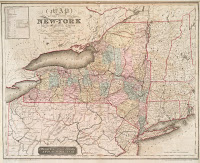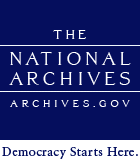.jpg) This past month, the New York Council for the Humanities awarded more than $300,000 in major grant funds to 22 organizations located in 14 counties in New York State. Awardees were selected from a pool of 60 applicants, a 35% increase from this time last year. Below is a complete list of awarded projects.
This past month, the New York Council for the Humanities awarded more than $300,000 in major grant funds to 22 organizations located in 14 counties in New York State. Awardees were selected from a pool of 60 applicants, a 35% increase from this time last year. Below is a complete list of awarded projects.
The Adirondack Museum
Blue Mountain Lake, Hamilton County
Awarded $20,000 for Let’s Eat!: Adirondack Food Traditions
An exhibition exploring the development of Adirondack food traditions from the 19th to the 20th centuries with a focus on the local environment.
Awarded January 15, 2010
Albany Institute of History and Art
Albany, Albany County
Awarded $2,500 for 2010 Hudson River Lecture Series
A series of four illustrated lectures about different aspects of the cultural and social significance of the Hudson River.
Awarded January 11, 2010
Brooklyn College, Hitchcock Institute for Studies in American Music
Brooklyn, Kings County
Awarded $8,800 for Black Brooklyn Renaissance Conference
A day-long event celebrating Brooklyn’s role as a major center of Black American music and culture.
Awarded January 15, 2010
Chemung County Historical Society
Elmira, Chemung County
Awarded $8,181 for Mark Twain in Elmira
An exhibition celebrating Mark Twain’s ties to the community of Elmira on the occasion of the anniversary of his birth.
Awarded January 15, 2010
Community Works
New York, New York County
Awarded $11,050 for Harlem’s Black Arts Movement: Its Past, Its Present and Its Future
Three interactive dialogues with key figures in the Black Arts Movement.
Awarded January 15, 2010
CUNY John Jay College of Criminal Justice
New York, New York County
Awarded $16,250 for Justice and Injustice in America: the 1950s
A series of lectures focused on the 1950′-s and 1960′-s in America featuring preeminent scholars of jurisprudence and U.S. History.
Awarded January 15, 2010
Eldridge Street Project
New York, New York County
Awarded $12,982 for Ways We Worship: Jewish Practice & Beyond
A new public tour and related lecture series exploring the history of Judaism in America.
Awarded January 15, 2010
Epic Theatre Center
New York, New York County
Awarded $11,300 for Epic Forum Series 2010: Doubt and Certainty
A series of over 100 post-performance scholar-led discussions related to the theme of “Doubt and Certainty.”
Awarded January 15, 2010
Erie Canal Museum
Syracuse, Onondaga County
Awarded $20,000 for Heartland Passage: the Oral History of the Erie Canal
An on-line oral history exhibition about people involved with the Erie Canal.
Awarded January 15, 2010
Geneva Historical Society
Geneva, Ontario County
Awarded $10,310 for Geneva’s Changing Landscape
Development of a permanent exhibition about the history of Geneva from the 1700s to the present, using the lens of environmental history.
Awarded January 15, 2010
Historic Cherry Hill
Albany, Albany County
Awarded $2,250 for Program Planning: Class and Power in 18th Century Albany
A planning grant for a program exploring class and power in 18th century Albany.
Awarded January 26, 2010
Imagining America
Syracuse, Onondaga County
Awarded $18,000 for Revitalizing Downtown Syracuse: Local Culture, Trans-Local Knowledge
A performance and four public discussions exploring issues of culture and community revitalization.
Awarded January 15, 2010
Lower Manhattan Cultural Council
New York, New York County
Awarded $15,000 for Access Restricted: Nomadic Lecture Series Exploring Lower Manhattan
A free nomadic lecture series that opens to the public rarely visited or inaccessible spaces in Lower Manhattan. This year’s session will focus on the topics of jurisprudence and ethics.
Awarded January 15, 2010
Morrisville State College, Science, Technology & Society Program
Morrisville, Madison County
Awarded $5,850 for Agricultural Acts: On the Futures of Farming and Food
A two-day program of events about the future of food production.
Awarded January 15, 2010
Mount Vernon Hotel Museum & Garden
New York City, New York County
Awarded $2,095 for A Feminine Palette, Women Artists of the 19th and Early 20th Century
A panel discussion exploring the work and lives of three lesser-known women artists from the 19th and early 20th century.
Awarded January 26, 2010
National Jazz Museum in Harlem
New York, New York County
Awarded $20,000 for Jazz for Curious Listeners
A year-long series of weekly dialogues about jazz and culture.
Awarded January 15, 2010
New Rochelle Council on the Arts
New Rochelle, Westchester County
Awarded $6,000 for Sounds Shore Shakespeare Festival
A Westchester county-wide celebration of Shakespearian works.
Awarded January 15, 2010
New York Library Association
Guilderland, Albany County
Awarded $7,500 for The Empire State Book Festival
A two-day celebration of reading held in the Empire State Plaza
Awarded January 15, 2010
Old Fort Niagara Association
Youngstown, Niagara County
Awarded $11,370 for Anglo-Native Relations on the Niagara Frontier, 1759-1764
A combination of special lectures and daily programs designed to examine the cross-cultural interactions at the fort between Iroquois people and Europeans.
Awarded January 15, 2010
Radio Diaries, Inc.
New York, New York County
Awarded $20,000 for America’s Lost Stories
A series of radio documentaries uncovering little-known chapters of 20th century American history to be broadcast on National Public Radio.
Awarded January 15, 2010
Slate Valley Museum Foundation
Granville, Washington County
Awarded $13,845 for Cultural Expressions in the Slate Valley
A series of six programs exploring the impact of various immigrant groups who came to the Slate Valley region between 1850 and 1930.
Awarded January 15, 2010
Southampton Historical Museum
Southampton, Suffolk County
Awarded $2,150 for Southampton Women Who Made a Difference
An exhibition exploring the influence of the Southampton women and their work from different historical periods and cultures.
Awarded January 9, 2010
SUNY Oswego, School of Communication, Media and the Arts
Oswego, Oswego County
Awarded $7,884 for From Global to Local: Diaspora, the Arts and Community
Weekly radio programs over a two-month period exploring issues of immigration and globalization as it relates to Central New York.
Awarded January 15, 2010
Three Village Historical Society
Saint James, Suffolk County
Awarded $20,000 for General Washington’s Spies: How a Group of Long Islanders Helped Win the Revolution
A permanent exhibition for children about a Long Island-based spy-ring during the Revolutionary War.
Awarded January 15, 2010
Traditional Arts in Upstate New York (TAUNY)
Canton, Saint Lawrence County
Awarded $20,000 for Kindred Pursuits: Folk Art in North Country Life
An exhibition of contemporary and historic folk art from the North Country, exploring its relation to the region’s culture and history.
Awarded January 15, 2010
Underground Railroad History Project of the Capital Region
Troy, Albany County
Awarded $19,686 for Gender, Class, Race and Ethnicity in Abolitionism, on the Underground Railroad, and in the Struggle Since
Three days of programming related to the history of the Unde
rground Railroad in New York State and beyond and its contemporary implications.
Awarded January 15, 2010
Weeksville Heritage Center
Brroklyn, Kings County
Awarded $2,500 for Planning Weeksville’s Orientation Exhibition: Defining a Sense of Place
Planning for an interactive orientation exhibition for the historic Weeksville community.
Awarded January 1, 2010
.jpg)





